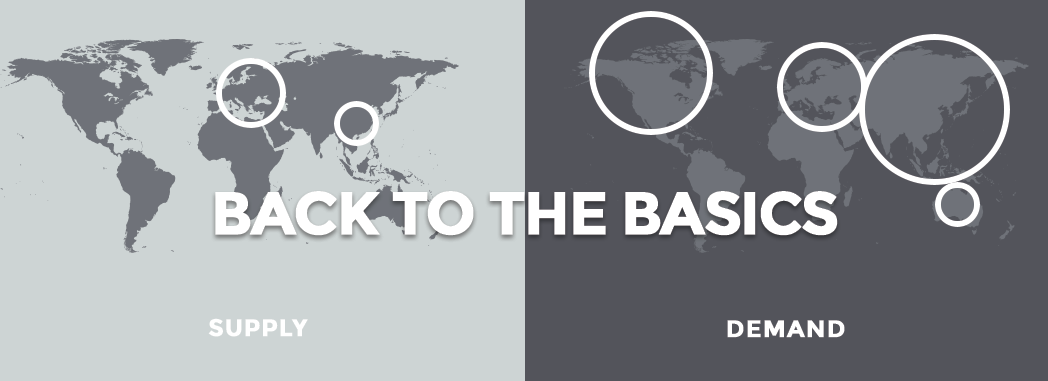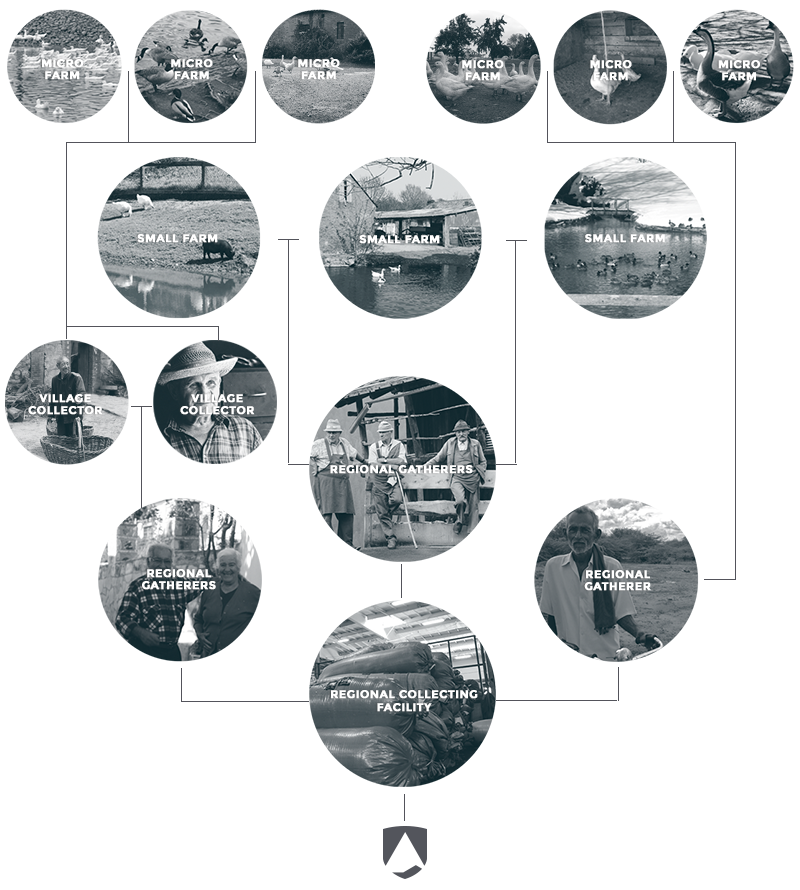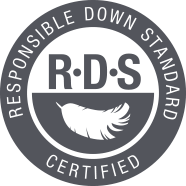
It's important to highlight the fact that 97-99% of the world's down is a by-product of the food industry. The small percentage that is not, comes from material like Eider down where down is collected from the nests of the migrated birds or from live plucking birds at the parent farms, which is a grave animal welfare concern to ALLIED and animal welfare groups worldwide.
The down market is notoriously unstable. With dietary habits changing, the demand for duck and goose meat is decreasing. When there are cold winters, demand for down increases regardless of the supply. And now we are faced with the erratic winters caused by climate change, increased global urbanization, proliferation of new types of bird flus, and natural disasters. All of these factors have a great impact on a material like down, which is why proper sourcing is now more important than ever.
THE TWO MODULES OF THE DOWN SUPPLY CHAIN
industrial farm module
The down supply chain is incredibly complex and multi-faceted. There are two main components: ?the industrialized farm and a more complex collector base. Much of the world's low and mid fill power down comes from the industrial supply chain where traceability is much easier. However, as the demand for high quality high fill power down rises, down collected from small village collectors has grown significantly.
While these larger industrialized farms provide an ease of traceability, this is where most animal welfare issues could occur.
This farm module is fairly straight forward in terms of tracing the birds from hatchlings through processing.

collector module
For us, it's an important part of the supply chain and we have spent years developing ways to to bring traceability throughout this incredibly complex collector-based module. After the birds are raised and then consumed, the waste is collected by village collectors who then take it to larger regional collectors to consolidate. At that point, material is aggregated and shipped to ALLIED for further separation and processing.
While traceability is incredibly difficult, animal welfare issues are virtually non-existent. Any harm done to the birds potentially means their family does not eat.
Since this is an integral part of the high fill power supply chain, ALLIED has opened small offices in rural parts of the world that teach these collectors the proper systems and protocols and how to fill out the paperwork required for the complete traceability required by ALLIED.



A BRIEF HISTORY OF RESPONSIBLE SOURCING
As you can see from the two modules above, the down supply chain is incredibly complex and is made only more complicated by the fact that the down accounts for far less than 10% of the total value of the bird. This is where relationships crafted over decades become a critical element in working with farms and slaughterhouses to ensure that our down comes from animals that have been treated humanely for their entire lives.
ALLIED has a long history of supplying responsibly sourced material to the industry. In fact, it stems from our inception in 1987 when ALLIED was created to serve a growing outdoor and apparel market. Until then— and even now much of the time— the down supply chain consisted of a network of brokers with no traceability back to the source. ALLIED established relationships beyond these brokers with farms and slaughterhouses which has allowed us an unparalleled level of quality, price stability, and transparency.
In 2008, ALLIED was the first down supplier to have our entire supply chain audited by a third party to ensure no material was being purchased from force fed or live plucked birds.
As animal welfare groups starting to ask more questions to the consumer about where their down was coming from, we sat down with some of the largest brands in the outdoor industry and identified the need for an industry standard that would be independently operated and provide a robust certification to the consumer. As much as ALLIED had regularly ?verified our own supply chain, there had not been a viable, scalable industry standard in which these claims were certified against.
With our intimate knowledge of the supply chain, relationships with farmers and slaughterhouses, and history in auditing such a complex source, we set out on a several year mission to assist in what would soon become one of the most robust standards in the entire textile industry— The Responsible Down Standard.